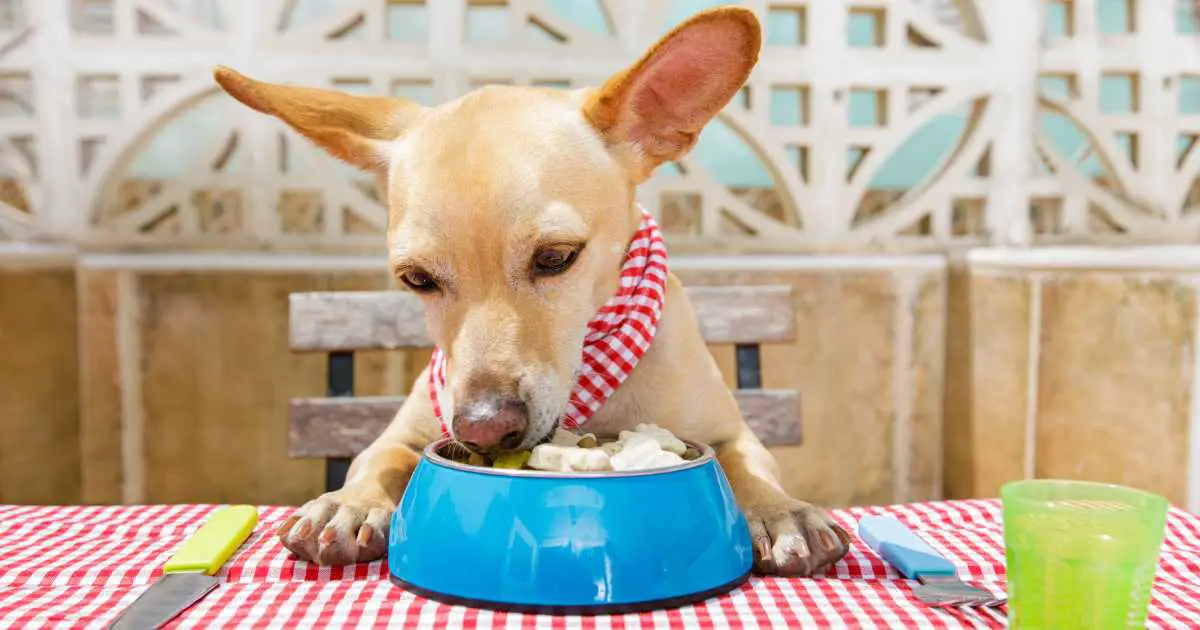Dogs love their hearty appetites, but there may be times when they go without eating for some time. As a dog owner, it’s important to understand how long your dog can go without eating and when it’s time to be concerned.
The length of time a dog can go without eating depends on its age, overall stamina levels, and of course, size. In this article, we’ll explore how long a dog can go without eating and what to do if your dog stops eating.
Common Reasons Why Your Dog Is Not Eating

Some common reasons why a dog might not be eating include:
Illness
A dog’s refusal to eat is often a sign of illness. Bacterial or viral infections, urinary tract infections, upset stomach, organ failure, cancer, and other illnesses or disorders can cause your dog to pick at their food or lose the desire to eat altogether. Even if a dog’s lack of appetite isn’t always a sign of a serious illness, timely veterinarian care is crucial.
Dental Problems
Another potential reason for the lack of appetite in dogs is dental problems. Dogs that are experiencing dental issues, such as toothaches or gum disease, may have difficulty eating due to discomfort.
Examine your dog for any signs of mouth sores, broken or chipped teeth, or oral tumors. To avoid dental issues, you can buy your dog dental chew. These are a great choice because they were developed with your dog’s dental hygiene in mind.
Changes in Diet or Environment
Dogs can be sensitive to changes in their diet or surroundings, sometimes leading to decreased appetite. If a dog is not eating due to a change in diet or environment, it may be necessary to make some adjustments to help them adjust.
This may involve offering small, frequent meals of a high-quality, palatable diet or adding appetite stimulants or special prescription diets as recommended by a veterinarian.
Stress and Anxiety
Dogs can become stressed or anxious for a variety of reasons, and this can lead to a lack of appetite. If you suspect that stress or anxiety is causing your dog to lose its appetite, it may be helpful to try to identify and address the underlying cause.
This may involve providing your dog with more mental and physical stimulation or addressing any issues causing them stress, such as separation anxiety.
When to Be Concerned About a Dog Not Eating?

If your dog suddenly stops eating or significantly reduces its food intake, it’s important to pay attention and take action. There are many potential reasons why a dog might not be eating, including dental problems, environmental changes, and underlying health issues.
If your dog has not eaten for more than a day or two, it’s important to consult with a veterinarian. The vet will be able to assess your dog’s overall health and determine the cause of their lack of appetite. Sometimes, a dog may not eat due to an underlying medical condition, such as kidney disease or pancreatitis.
It’s also important to pay attention to your dog’s water intake. If your dog is not eating but is still drinking water, it may be less of a concern. However, if your dog is not eating and goes on hours without water, this could be a sign of a more serious problem and requires immediate medical attention.
In general, it’s always a good idea to consult with a veterinarian if your dog is not eating or drinking. They will assess your dog’s overall health and recommend the best action.
How Long Can a Dog Go Without Eating?
Dogs can go a couple of days without food, but it’s not recommended to let them go without eating for an extended period. Generally, A healthy adult dog can typically go 3-5 days without eating, but this can vary based on the individual dog’s physical condition and overall health.
It’s important to remember that this is just a general guideline, as some dogs may be able to go longer without food while others may need to eat more frequently.
Puppies and aged dogs, in particular, may be at higher risk for developing health problems if they go without food for too long. This is because their bodies have different nutritional requirements and may be more sensitive to changes in appetite.
If your puppy or senior dog is not eating, it’s important to consult a veterinarian as soon as possible to determine the cause and get the appropriate treatment.
How to Get Your Dog to Eat?

If your dog is not interested in their current diet, there are several tips you can try:
Add a Tasty Topping or Mix for Their Food
Meal toppings are any products you add to your dog’s food to improve the flavor. Consider it a seasoning for dog food. Plain chicken, fish, low-sodium beef/chicken broth, sweet potatoes, boiled or steamed butternut squash, or pumpkin are also good options. Just watch out for things like onion or garlic that are toxic to dogs.
Buy Higher-Quality Foods or Swap Flavors.
Choosing a food brand that is made with high-quality ingredients and avoids low-quality fillers or artificial preservatives may increase your dog’s appetite. Try to avoid similar flavors while switching.
For example, switching from Purina One Chicken & Rice to Diamond Naturals Chicken & Rice is unlikely to make your dog take his meal because the flavors of these two dry dog foods are similar. You need to experiment with a new flavor instead. Try beef, venison, or fish as an alternative.
Cut Back on Treats
In general, treats should only make up 10% of your dog’s daily calorie intake. Any more than that, and you’re giving your dog more goodies than he requires. If you have been giving your dog a lot of treats, it may be causing them to lose their appetite for their regular meals. Try cutting back on treats and see if this helps your dog’s appetite return to normal.
Keep Serving the Meal Until Your Dog Eats It
In some cases, a dog may simply need a little extra time to adjust to a new food or a change in their routine. If your dog is not eating their meals, try leaving the food out for a little longer and see if it will eventually eat it. Just be sure to monitor the food to ensure that it remains fresh and discard any that is spoiled.
Cut the Scraps
If you have been giving your dog a lot of scraps or table food, it may be causing them to lose their appetite for their regular meals. Set a specific time each day for eating and the remaining of the day for other activities like play, exercise, rest, and so on.
Give treats sparingly and only as quick rewards for expected excellent behavior or during training. Try cutting back on the scraps and see if this helps your dog’s appetite return to normal.
Endnote
How long can a dog go without eating? Proper nutrition is crucial for dogs’ health and well-being. A lack of food can lead to weight loss, muscle wasting, and organ damage. If your dog’s appetite changes or they go without eating for an extended period, consult a veterinarian to determine the cause and get treatment.
Provide a high-quality diet and address underlying causes of lack of appetite to keep your dog healthy and nourished. Pay attention to your dog’s overall health and look for changes in behavior or appearance, such as lethargy or changes in weight or coat.
